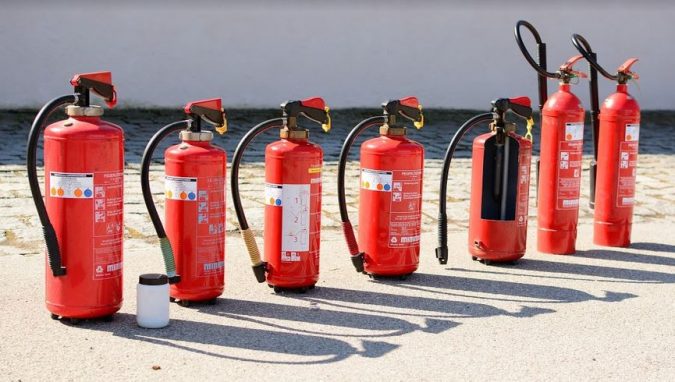
What is fire protection? The first measures to prevent fires start at the construction stage. It is then that the materials from which the facility will be built are determined, it is important to use the best possible materials with low flammable properties.
An important issue is also the use of appropriate structural solutions in the building, e.g. in order to stop the spread of fire and protect other buildings in the vicinity from ignition, non-combustible ceilings are used and fire walls are erected. In addition, already at the planning stage, it is necessary to determine where portable firefighting equipment will be placed.
How else can a building be protected against fire?
Even at the design stage, it is necessary to take into account good access to the facility for rescue services, provide them with easy access to the water outlet, i.e. hydrants and water reservoirs, and above all, properly designate escape routes. Larger facilities and buildings should also be equipped with an additional water supply system.
Specialists in the field of fire protection also indicate the need to have appropriate fire protection equipment. And yes, you can install fire alarm systems, i.e. so-called fire detectors. They will warn us in the event of smoke or open fire in a given room, automatically activating the alarm and calling the appropriate services. This solution is now very common mainly due to its wide application.
What fire equipment?
In addition, each building should be equipped with handy firefighting equipment that is used to extinguish a fire in its initial phase. It is equipment that most of us are well-known, because such equipment includes primarily various types of fire extinguishers, hydronets and damping equipment such as fire blankets.
For fire equipment additional equipment such as sandboxes, ladders or shovels are also included. All this equipment is necessary when a fire occurs in a building or plant. Often, a quick response using fire fighting equipment. it can stop the fire from spreading or save the building from burning down completely.
Location of warning devices and fire-fighting equipment.
It is important that all basic fire extinguishing and alarm equipment is placed in easily accessible and visible places. The best places for this are such places as entrances to buildings and rooms, staircases and corridors. If we are dealing with company facilities, warehouses or production halls, such places must be properly marked so that employees can see them from different places in the hall or warehouse.
In addition, each employee should be properly trained and informed about the location of such places. A quick response in the event of a fire hazard can be invaluable. It is also important that the right amount of extinguishing agents is available, experts indicate at least 2 or 3 kg per 100 m2 of area in the building, not protected by a fixed extinguishing device, such as sprinklers.
It is also assumed that from any place in the building the road to the nearest extinguisher should not be more than 30 meters and the access to the extinguishers should be sufficiently wide.
What type of fire extinguishers?
Portable fire extinguishers are the most popular and most commonly used fire fighting equipment. in factories. However, there are several types of fire extinguishers on the market, so which one should you choose? When determining the type of the facility’s need for fire extinguishers, it is necessary to take into account the threats to which a given building or plant is exposed. Thus, liquid or foam extinguishers are usually used to extinguish solid fires.
On the other hand, for fires of flammable liquids or melting solids, liquid, foam, powder or snow extinguishers are used. Powder or snow extinguishers are used to extinguish combustible gases, powder extinguishers are used to extinguish light metal fires, and live equipment is extinguished with powder or snow extinguishers.
Not only fire-fighting equipment, but also knowledge
In addition to the mere prevention and equipping buildings with appropriate fire-fighting equipment, it is also necessary to provide employees with basic knowledge of the rules of conduct in the event of a fire hazard. Employees should know the locations of fire extinguishers and other extinguishing agents, as well as the evacuation routes and the entire protocol of conduct in specific cases. The safety and often life of employees may depend on the correct response, which is why a quick and correct response is so important.








